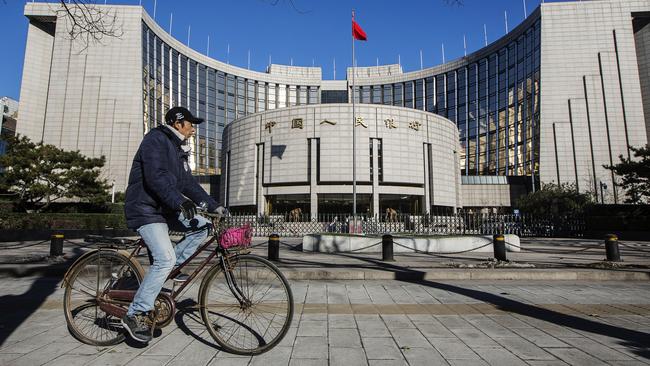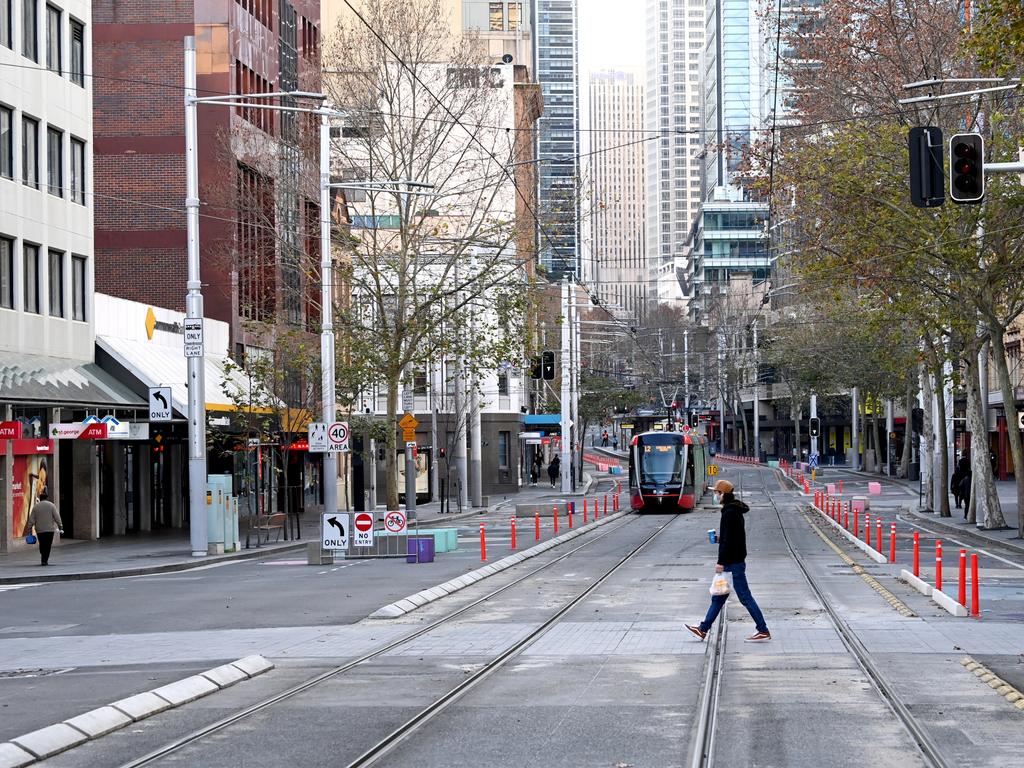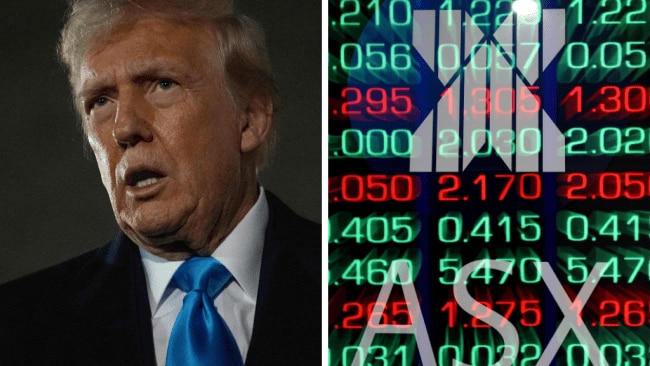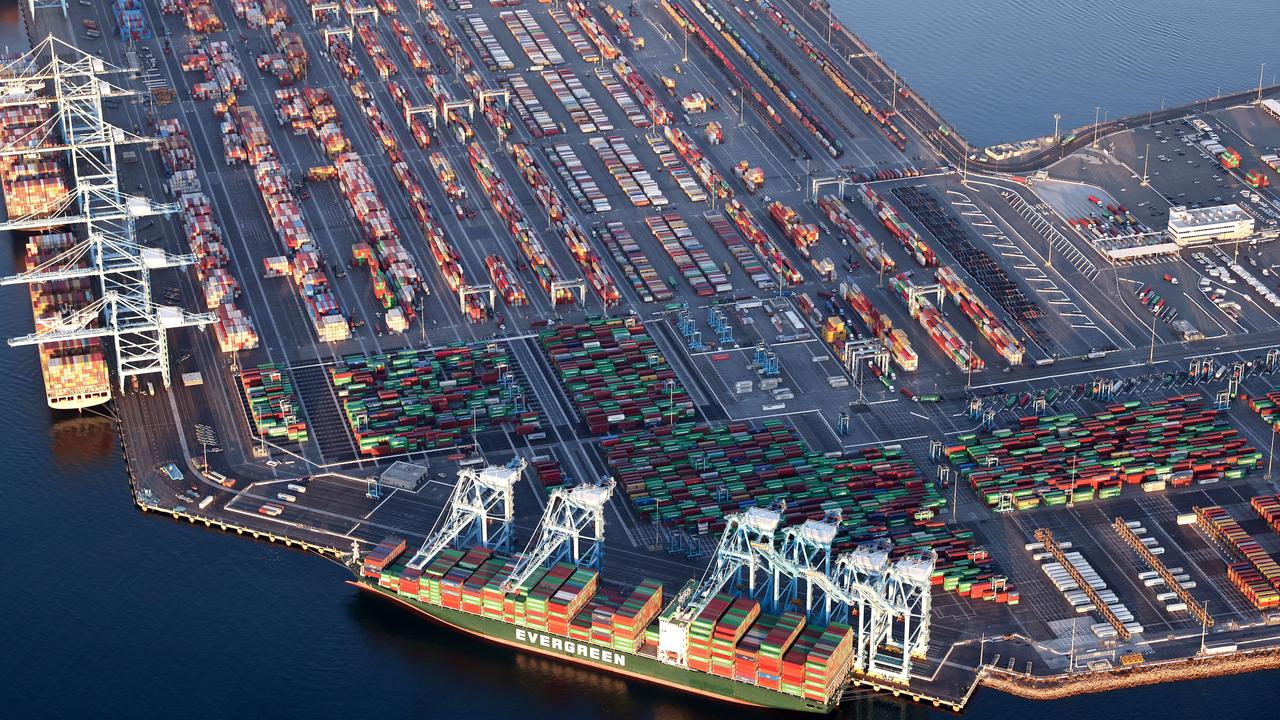Boost from Chinese bank stimulus ‘won’t last’
Support for global risk assets from the liquidity boost provided by the reduced reserve requirement ratio for Chinese banks may prove fleeting.

Support for global risk assets from the liquidity boost provided by the reduced reserve requirement ratio for Chinese banks announced at the end of last week may prove fleeting.
While the monetary stimulus from the world’s No.2 economy and the biggest consumer of most commodities supports world industrial production growth, the RRR cut won’t ease all of investors’ concerns, according to Credit Suisse Australia macro strategist Damien Boey.
Australia’s S&P/ASX 200 share index rebounded 0.8 per cent to 7333.5 points on Monday after hitting a three-week low of 7226 on Friday as offshore markets tumbled and then recovered, with the S&P 500 hitting a fresh record due to the fortunate timing of China’s policy decision.
But with the local transmission of Covid in Sydney taking off over the weekend, the lockdown could go on for months rather than the two weeks that investors were assuming when the market was trading around these levels two weeks ago.
Of course, the market underestimated the policy response to the crisis last year – arguably it would not have been so strong if markets did not collapse – but the situation would have to be pretty dire to trigger another major change of course now that vaccinations are under way globally.
The Delta variant is obviously also a global problem and while the early trends in hospitalisations and deaths in vaccinated countries are encouraging, the market is still priced for perfection, at least in terms of price-to-earnings multiples and volatility.
The US bond market seemed to embrace the “risk-on” narrative and make some room for supply this week, with the 10-year yield up 7 basis points to 1.32 per cent on Friday after hitting a five-month low of 1.25 per cent amid fear of a growth slowdown as the Fed spoke about tapering.
But in what may be a worrisome sign for the market’s interpretation of the growth outlook as Covid takes off and central banks make plans to lessen their stimulus, Australia’s 10-year yield sank 4.4 basis points to a fresh five-month low of 1.316 per cent on Monday and the recovery in US Treasury yields faltered.
Boey notes non-Japan Asia appears to have contributed roughly 30 per cent of a 1 per cent shrinkage of global excess liquidity in the year to May, so developed markets investors are “right to be looking to China for inspiration”, even though the RRR cut was more of a factor for emerging markets equities, which were “very oversold”.
Perhaps the People’s Bank of China was getting in before an expected slowing in June quarter GDP data this Thursday.
Looking ahead, Boey says world excess liquidity growth will “flex higher on Chinese easing”.
And if one thinks that central banks will be able to navigate the challenges with inflation, tapering and tightening, there is a case for a more constructive stance on cyclicals relative to defensives.
His “cyclicals-defensives” leading indicator turned deeply negative in June, reflecting the sharp contraction in world excess liquidity, as well as the “unusually low” level of the S&P 500 VIX volatility index relative to leading indicators, and positive term risk premia in bonds.
“The signal foreshadowed a flight to quality, which has broadly played out recently,” Boey says.
Slowing Chinese growth and inflation and a greater liquidity injection to fuel credit creation should “turn the fortunes of the non-Japan Asian contribution to the world excess liquidity impulse”.
Indeed the Chinese credit impulse was already rising in June even before the RRR cut.
But while positive near-term on the reflationary effects of the RRR cut, Boey argues that in the longer term there are limits on how much the global liquidity cycle can turn higher unless the US can provide a similar impulse to China. “To be sure, there is the option of more fiscal stimulus to make up for the money creation the private sector is not able to provide, but with inflation still a clear and present danger there is a limit on the appetite of fiscal policy makers to do more,” he said.
He cautions that US inflation is likely to be “sticky and elevated”, even as transitory pressures potentially fade, because rental inflation – roughly 30 per cent of the CPI basket – is likely to pick up to be more in line with strong house price inflation.
“Moreover, if China stimulates, the risk is that it will start exporting inflation again to the rest of the world, making inflation dynamics more precarious. We are concerned that asset prices are so stretched in the US that investors will be more sensitive to valuation pressures from a rising discount rate than the outlooks for the economy or earnings.”
From an Australian market perspective, he favours large iron ore miners, or their exposure to prospective Chinese easing, and their quality characteristics.
“But we take the view that quality rotation has a bit more to go in 3Q,” he said







